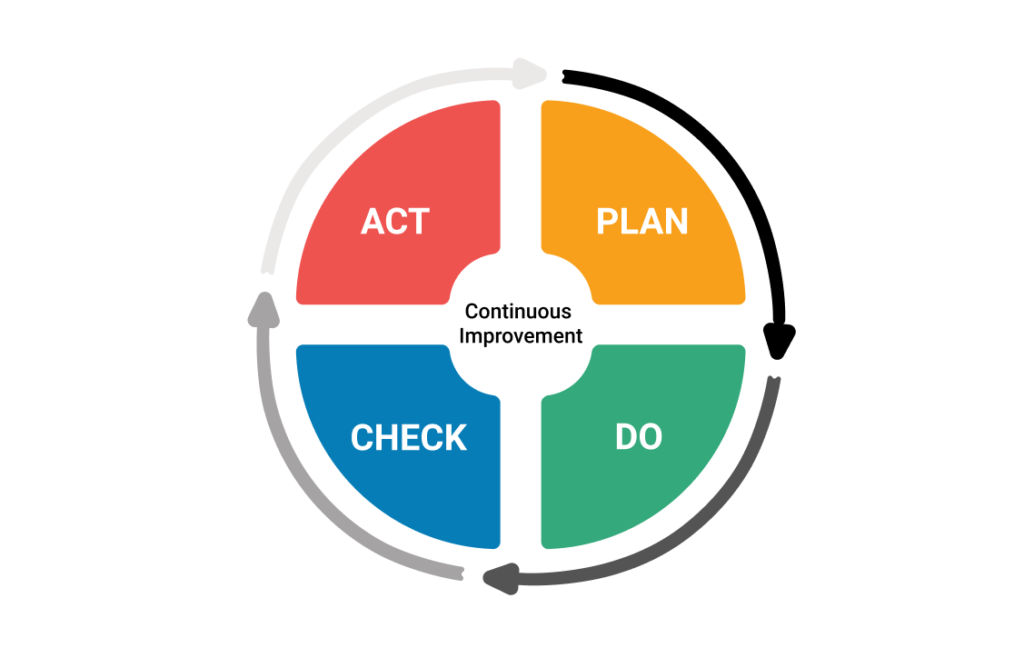Put your IT leading activities under continuous improvement
IT managers have to tightly organize their activities in a fast paced environment. We’ll target here at sorting out which way to go when we are under high pressure because there’s an huge list of “must to have” to implement in a short time frame. Let’s go directly to the point, if only one process has to be kept in mind, it would be the “Continuous Improvement” one. This one was formalized by Edwards Deming as the PDCA wheel.

If you apply this process you would be able to bring improvement little by little to all things around. To go fast below is a minimal list of points to treat during the 4 stages.
PLAN
- What are my objectives and constraints? The changes can be brought by the internal company vision (development of new services) but also from externals factors like regulators (GDPR, AEOI,.. ) or other business partners/challengers (hackers). Whatever these are it’s important to consider, sort and categorize all of these.
- What’s my budget to maintain and update/upgrade my infrastructure? Even if this seems to be obvious, it’s common to see projects in trouble due to budget underestimates. Remind to always keep an “on top of” minimal contingency budget.
- What is the most suitable deployment strategy? You’ll find an excellent description of the possibilities here https://thenewstack.io/deployment-strategies/. This is typically a point to study from the users perspective but also with the IT teams as it usually overlaps with the DevOps domain.
- What are the most judicious technologies? Here, no silver bullet solution. You’ll have to inquire IT professional advises. The best would be to setup an advisory board with internals and external consultants. Don’t forget that this must always be driven by the existing infrastructure topology. Try also as much as you can to avoid evangelists of dedicated brand or lab testers.
- Do I have the adequate resources to implement the targeted infrastructure topology? If not is it feasible to recruit the missing elements within an acceptable time-frame (time during which the decided changes are still relevant)?
- Considering all the previous elements, what is the possible schedule? Does this one is acceptable, if not how to make it acceptable? It’s better to split into smaller stages a monolithic delivery, this will increase the driving reactivity and reduce the error marge.
DO
- Does every actor know exactly what he has to deliver, per when and with which dependencies?
- Do you have progress metrics for each of the deliverables? If not you have to bring around the implied actors to define these metrics.
CHECK
- Are the result metric within the tolerance defined during the “Plan” stage?
- Is it possible to implement testing automation to assure a quick reproducible quality check?
ACT
- What are the lessons learned?
- How to make it better for the next iteration?
We arrive at the end of this short post in which I hope that you find interesting elements to assist you in your management duty.